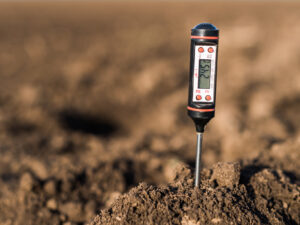
Combatting Heat Stress in the Workplace: Prevention Strategies for Outdoor Workers
Outdoor workers are especially vulnerable to heat stress, a condition caused by excessive exposure to a hot environment that can lead to serious health problems, including heat exhaustion and heat stroke. With rising global temperatures and longer summers, it’s becoming more crucial to manage heat risks effectively.
This article focuses on recognising the signs and symptoms of heat stress, understanding the risks involved, and adopting practical strategies to prevent it. We also explore how regular assessments can help employers create safer work environments.
What is Heat Stress and Why is it Dangerous?
Heat stress occurs when the body can no longer regulate its internal temperature, leading to conditions like:
- Heat exhaustion: Symptoms include heavy sweating, rapid pulse, weakness, nausea, and headaches.
- Heat stroke: A life-threatening condition where the body’s temperature rises above 40°C, causing confusion, fainting, and organ failure if untreated.
Workers exposed to high temperatures, direct sunlight, or heavy physical activity are most at risk. Without intervention, heat stress can impair concentration, increase the risk of workplace accidents, and even be fatal in extreme cases.
Who is Most at Risk?
- Construction and agricultural workers: These industries require long hours outdoors, often under direct sunlight.
- Factory and warehouse employees: Indoor environments with poor ventilation or high humidity levels can also pose heat risks.
- New or returning workers: Employees not acclimated to working in heat need time to adjust and are at higher risk of heat-related illness.
- Workers in PPE: Wearing protective equipment can trap heat, preventing the body from cooling down effectively.
Recognising the Early Signs of Heat Stress
Identifying the early symptoms can save lives. Look out for the following warning signs in yourself or others:
- Heavy sweating
- Dizziness or headaches
- Nausea or vomiting
- Muscle cramps
- Weakness and fatigue
- Confusion
If heat stress is not treated early, it can lead to heat stroke, which requires immediate medical attention.
Prevention Strategies for Heat Stress
Employers and workers can adopt practical measures to reduce the risk of heat stress. Here are key strategies to stay safe:
Hydration is Key
- Encourage workers to drink cool water every 15-20 minutes, even if they don’t feel thirsty.
- Avoid caffeine and sugary drinks, as they can cause dehydration.
- Provide shaded or cool areas where workers can take water breaks.
Modify Work Schedules
- Plan strenuous tasks during cooler parts of the day, such as early morning or late afternoon.
- Rotate tasks among workers to reduce continuous heat exposure.
- Schedule more frequent rest breaks during hot weather.
Acclimatisation Programs
- Gradually increase workers’ exposure to heat over several days to allow their bodies to adjust.
- New employees or those returning from time off need extra time to acclimate.
Use Cooling Gear
- Provide lightweight, breathable clothing to minimize heat retention.
- Consider cooling vests, damp towels, or portable fans to help workers stay cool.
- Ensure workers using Personal Protective Equipment (PPE) are given regular breaks in cool areas to avoid overheating.
Create Shaded Rest Areas
- Set up shaded or air-conditioned areas where workers can rest during breaks.
- If shade is limited, use tents, canopies, or umbrellas to block direct sunlight.
Training and Awareness
- Educate workers about the signs of heat stress and the importance of hydration.
- Train supervisors to recognise symptoms early and respond in the right way.
- Encourage a buddy system, where workers look out for each other.
The Role of Heat Stress Assessments
A key component of managing heat stress is conducting regular assessments to identify risks and ensure preventive measures are effective. Heat stress assessments typically include:
- Evaluating Work Conditions: Assess the temperature, humidity, and level of physical activity involved in each task.
- Monitoring High-Risk Areas: Identify zones with poor ventilation or direct exposure to the sun.
- Reviewing Worker Health: Consider the fitness levels and medical conditions of workers, as some individuals are more prone to heat stress.
- Adapting Control Measures: Ensure cooling stations, water supplies, and work schedules are aligned with the current weather conditions.
At Apex Environmental, our heat stress assessments help organizations identify and control heat-related risks. These assessments ensure compliance with safety regulations and create safer environments for employees working in hot conditions.
Long-Term Benefits of Managing Heat Stress
Preventing heat stress does more than protect workers—it also improves productivity and morale. Employees who feel safe and comfortable are more likely to stay focused and avoid accidents.
In addition, proactive management helps businesses avoid costly downtime, liability claims, and regulatory penalties.
Conclusion
Heat stress is a serious risk for outdoor workers, but with proper prevention strategies and regular assessments, it can be managed effectively. Employers can protect their workforce by promoting hydration, adjusting work schedules, providing cooling gear, and offering shaded rest areas.
Regular assessments by professionals, such as Apex Environmental, ensure that organizations stay on top of evolving risks and maintain safe working conditions. By investing in the health and safety of their employees, businesses not only comply with regulations but also create a positive and productive work environment.
Protecting workers is essential for their well-being—and it benefits everyone in the long run.








